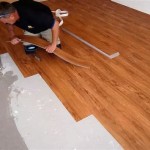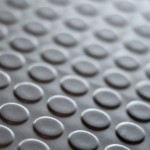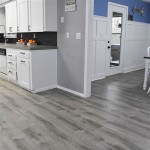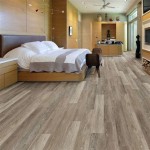Suitable Flooring For Bathrooms: A Comprehensive Guide
Selecting the appropriate flooring for a bathroom is a critical decision, impacting both the aesthetics and functionality of the space. Bathrooms are uniquely challenging environments due to high humidity levels, frequent water exposure, and temperature fluctuations. Therefore, the chosen flooring material must be resistant to moisture, durable enough to withstand daily use, and easy to maintain. This article will explore various flooring options suitable for bathrooms, outlining their advantages, disadvantages, and factors to consider during the selection process.
The primary concern when choosing bathroom flooring is water resistance. Materials that readily absorb water can lead to mold and mildew growth, structural damage, and unpleasant odors. Porosity, or the presence of tiny holes that allow liquid to penetrate, is a key factor influencing a material's water resistance. Dense, non-porous materials are generally preferred in bathroom settings. Furthermore, the flooring should offer a safe, slip-resistant surface, especially when wet. Regular cleaning and maintenance are also vital for preserving the integrity and appearance of bathroom flooring.
Understanding Water Resistance and Durability
Water resistance in bathroom flooring goes beyond simply repelling surface water. The material must also prevent moisture from seeping into the subfloor, which can cause extensive damage. This requires careful consideration of both the flooring material itself and the installation methods used. Proper sealing and grouting are essential to create a watertight barrier. Durability refers to the flooring's ability to withstand wear and tear, including scratches, dents, and fading. Bathrooms experience frequent foot traffic and are often exposed to harsh cleaning chemicals, making durability a crucial consideration.
The type of subfloor is also relevant. A concrete subfloor is inherently more water-resistant than a wooden subfloor. If a wooden subfloor is present, it's crucial to ensure it is properly sealed against moisture intrusion before installing any flooring material. Inadequate subfloor preparation can compromise even the most water-resistant flooring.
Another aspect of durability is resistance to staining. Bathrooms are prone to spills of various liquids, including soaps, shampoos, and hair dyes. Flooring materials that are stain-resistant will maintain their appearance over time with minimal effort.
Exploring Popular Bathroom Flooring Options
Several flooring options are commonly used in bathrooms, each with its unique set of characteristics. These include tile (ceramic, porcelain, and stone), vinyl (sheet, plank, and tile), laminate, and concrete. Each material offers a balance of aesthetics, durability, and water resistance.
Tile Flooring
Tile is a widely popular choice for bathrooms due to its exceptional water resistance and durability. Ceramic and porcelain tiles are particularly well-suited for wet environments because they are virtually impervious to water. Porcelain tile is denser than ceramic tile, making it even more resistant to moisture absorption. Both offer a wide range of styles, colors, and patterns to match any bathroom design.
Grout lines are a potential weakness in tile flooring. Grout is porous and can absorb water if not properly sealed. Regular sealing of grout lines is essential to prevent water damage and mold growth. Epoxy grout is a more water-resistant alternative to traditional cement-based grout.
Stone tiles, such as granite, marble, and slate, offer a luxurious look but require more maintenance. Natural stone is porous and needs to be sealed regularly to prevent staining and water damage. Some stone tiles may also be more susceptible to scratching than ceramic or porcelain tiles.
Vinyl Flooring
Vinyl flooring is a cost-effective and water-resistant option for bathrooms. Sheet vinyl offers the best water resistance because it comes in large rolls with minimal seams. Vinyl plank and tile flooring are also water-resistant, but the seams between planks or tiles can be vulnerable to moisture intrusion if not properly installed.
Vinyl flooring is relatively soft and comfortable underfoot compared to tile. It also offers good sound insulation. Vinyl is available in a wide variety of designs, including those that mimic the look of wood, tile, or stone.
The quality of vinyl flooring can vary significantly. Higher-quality vinyl is more durable and resistant to scratches and dents. It is important to choose a vinyl flooring product that is specifically designed for bathroom use.
Laminate Flooring
Laminate flooring is a popular choice for its affordability and realistic wood-like appearance. However, traditional laminate flooring is not recommended for bathrooms due to its vulnerability to water damage. The core of laminate flooring is typically made of wood composite, which can swell and warp when exposed to moisture.
Waterproof laminate flooring is a relatively new option that is designed to withstand moisture. These products feature a waterproof core and a tightly sealed surface. While waterproof laminate is more suitable for bathrooms than traditional laminate, it is still important to follow the manufacturer's installation instructions carefully to ensure a watertight seal.
Even with waterproof laminate, it is important to clean up spills promptly to prevent water from seeping into the seams. Laminate flooring is also susceptible to scratching and denting, so it is important to choose a product with a durable wear layer.
Concrete Flooring
Concrete flooring offers a modern and industrial look for bathrooms. Concrete is naturally durable and water-resistant, but it needs to be properly sealed to prevent staining and water damage. Polished concrete is a popular option for bathrooms because it is smooth, easy to clean, and resistant to moisture.
Concrete can be cold and hard underfoot, so it is often paired with radiant heating to provide warmth. Concrete flooring can be customized with various colors, textures, and finishes. It is also a relatively low-maintenance option.
The installation of concrete flooring requires specialized skills and equipment. It is important to hire a qualified contractor to ensure a properly installed and sealed concrete floor.
Key Considerations for Choosing Bathroom Flooring
Selecting the right bathroom flooring involves evaluating several factors beyond material properties. Budget, aesthetics, maintenance requirements, and the overall style of the bathroom are all important considerations.
Budget and Cost
The cost of bathroom flooring can vary widely depending on the material chosen and the complexity of the installation. Tile and stone are typically more expensive than vinyl or laminate. Installation costs can also vary depending on the size of the bathroom and the condition of the subfloor. It is important to obtain quotes from multiple contractors and to factor in the cost of materials, installation, and any necessary subfloor preparation.
Aesthetics and Design
Bathroom flooring should complement the overall design of the space. Consider the color scheme, style of the fixtures, and the size of the bathroom when selecting a flooring material. Lighter colors can make a small bathroom feel larger, while darker colors can create a more dramatic effect. Natural stone tiles can add a touch of luxury, while vinyl flooring can offer a cost-effective way to achieve a similar look.
Maintenance and Cleaning
Bathroom flooring should be easy to clean and maintain. Tile and vinyl are generally easy to clean with mild soap and water. Stone tiles may require special cleaning products. Laminate flooring should be cleaned with a damp mop and should not be exposed to excessive moisture. It is important to choose a flooring material that is resistant to stains and mildew.
Slip Resistance
Slip resistance is a critical safety consideration in bathrooms. Choose flooring materials with a textured surface or add slip-resistant mats or rugs to areas that are prone to getting wet. Tile flooring with a matte finish is generally more slip-resistant than tile with a glossy finish. Certain vinyl flooring products are specifically designed to provide enhanced slip resistance.
The appropriate selection of bathroom flooring is a multifaceted process. By carefully considering water resistance, durability, aesthetics, budget, and maintenance requirements, homeowners can choose a flooring material that meets their specific needs and enhances the overall functionality and beauty of their bathrooms.

Best Bathroom Flooring Options

The Best Flooring For Your Bathroom Surplus Building Materials

Best Flooring For Bathrooms In 2024 Badeloft

10 Best Worst Flooring Options For Your Bathroom Horizon Services

Best Flooring Options For Bathrooms Word Of Mouth Floors

Waterproof Bathroom Flooring Options Twenty Oak

The Pros Cons Of Bathroom Flooring Options Carpet Court

Best Bathroom Flooring Options

What Flooring Is Best For The Kitchen Or Bathroom

What Is The Best Flooring For Bathrooms Tarkett
Related Posts








